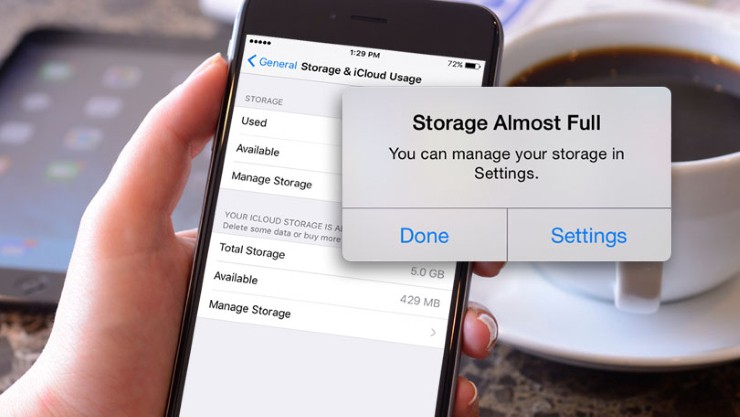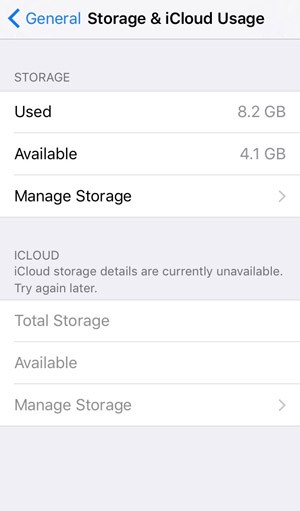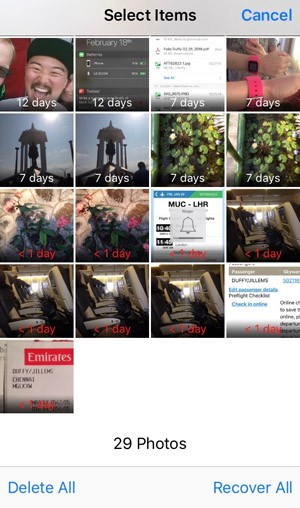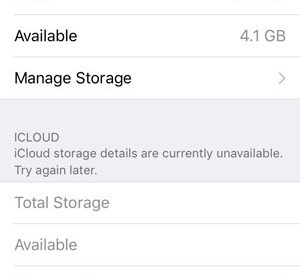By Jill Duffy

How much space is left on your Apple iPhone, iPad, or iPod touch? Do you hit a wall whenever you try to update iOS or take a video or download a new recommended app? What?s the best way to move files you want to keep, to free up space? And how can you make smart decisions about what to keep and what to delete? Follow these few simple steps, and you?ll be on your way to a less overloaded, more organized iPhone or iPad.
1. Check Your Total UsageGo to Settings > General > Storage & iCloud Usage.
At the very top, you?ll see Used and Available space. Those fields refer to the space on your iPhone or iPad. Below them, you?ll see your iCloud space. For the purpose of this article, however, we?ll focus on local storage, the top numbers.
You don?t need to understand these numbers deeply, and there are no hard and fast rules about how much space you need to leave free on your iPhone or iPad or iPod touch. If you simply want to have enough free space so that you can take new photos and install new apps without worrying about hitting an obstacle, give yourself at least 1GB (1GB=1,024MB). I?m more comfortable leaving at least 2GB available.
Note that when you add your available space and the used space, they won?t add up to the total size of your phone (for example, a 16GB iPhone may appear to have only about 12.3GB total space) because it doesn?t include the space being used by the operating system.

2. Analyze Which Apps Are Taking the Most SpaceTap on Manage Storage. Here you?ll see a list of all your apps, in order of how much space they consume.
Select any app, and a new page shows the usage into two parts: the amount of space the app itself uses (in light gray at the top) and the space used by the app?s data and documents.
For example, my favorite podcasting app, Downcast, takes up 622MB total: 17.1MB for the app and 605MB for documents and data.
Sometimes, this information helps you see that it?s not the app that takes up so much space, but rather what you store in it. In my case, the Downcast app is listed first when I go to the Manage Storage page, meaning it takes up the most space of all my apps, so I know I can make big gains by getting rid of any excess data in it. And I have some options. I could listen to the podcasts that are saved in the app and delete them afterward. Or I could change my settings in the app so that new podcasts download to my phone only when I want to play them. Or I could change the settings to stream podcasts with a video component and never download them.
3. Check Your Photo and Video UseA lot of people find that the Photos & Camera app takes up a lot more space than they realized, so let?s deal with that app directly.
When you tap on the app to see how much space it uses, you?ll see both Photo Library and Shared Photo Stream. Right now, just focus on Photo Library, as that?s the space being used locally on your iPhone or iPad.
If you have more than 1GB here, you should consider copying photos and videos to another storage space so that you can delete them from your iPhone and free up a lot of space. In my opinion, one of the easiest ways to do it is to use Dropbox to offload your iPhone photos. But you can use any cloud-based syncing and storage service you like, such as Box, SugarSync, and so on. Ideally, you want the service to have a mobile upload feature in its iPhone app, as Dropbox does.

You can find complete instructions for transferring photos and videos off your iPhone or iPad and into Dropbox in the article linked above, but to summarize: Turn on the Camera Upload feature and let it run. When it?s finished, log into the Dropbox app and verify that you can find and open your images. Then delete them from the Photo app. Finally, open the Photos app, go to Albums, and select Recently Deleted. Tap Select, and then at the bottom tap Delete All. If you skip that last step, you won?t free up any space for a month, as your iOS device will hang onto deleted photos for 30 days, just in case you change your mind about deleting them. When you use the Dropbox upload tool, you don?t have to worry about it because you?ve already made copies of the photos and saved them to Dropbox.
Other apps that often take up a lot of space because of their data include music players, podcast players, Voice Memos, and office apps. You probably want to keep the apps themselves, but you might be able to free up space by deleting files that are no longer relevant.
To delete documents and data, you have to open the app where they?re contained and remove them there. In other words, you can?t delete them from the iPhone or iPad Settings area.
4. Target Apps You Don?t UseGo back to the Manage Storage page. Scroll through the list of apps and look for apps you don?t use. It?s much easier to find apps you no longer need here, where they?re in a neat list, than on your home screens, where they are likely to be scattered across several pages and bunched into folders. (See also my tips for how to organize your iPhone or iPad apps among the home screens.)
If you find apps you don?t need or don?t use, or that you use only in specific contexts (say, using travel apps only while you?re traveling), consider deleting them. Apple keeps track of apps you?ve purchased in the past so that you don?t end up paying for them twice; you can download them again at no extra charge.
To delete apps, go to your iPhone or iPad?s home screen and press and hold any app. You?ll see all the apps shake on screen. A small X appears on each icon. Press the X on the unwanted app, and confirm to delete. When you?re done, press the Home button.
5. Remove Unwanted Music Tracks and AlbumsMultimedia, such as audio tracks and videos, takes up a lot of space. There are two ways to delete audio files and videos.
From Settings: Go to Settings > General > Storage & iCloud Usage > Manage Storage.

Scroll down to the Music app and tap it. The next screen summarizes all the songs and albums you have stored locally.
Clean out all the tracks in any album by swiping it right to left. You can also use the Edit button (top right) to delete multiple tracks and albums in one shot. Both of these actions delete all the files associated with the entry or album.
From Within the App: Open the Music app. Go to Artists > Only Downloaded Music. Toggle that button on. Now you?ll see only music that?s stored locally and taking up space.
Delete track by track, album by album, and so forth, by tapping the song or album and hitting Delete. If you notice a lot of duplicate tracks from music you put on your iPhone or iPad from iTunes, you?re better off cleaning them up in iTunes rather than on your mobile device. You can get help from software that specifically handles deduping in iTunes, such as Leawo Tunes Cleaner.
6. Empty Safari?s CacheOne final smidgen of junk to wipe off your iPhone or iPad is the cache for the Safari Web browser or other mobile browsers you use.
For Safari, go to Settings > Safari. Tap Clear History and Website Data.
Other mobile browsers may have slightly different instructions for dumping the cache. Try looking in the app?s settings if you can?t find the option in the iOS Settings.
Read more: ?The Easiest Way to Back Up and Organize iPhone Photos?
This story originally appeared on PCMag.com.


